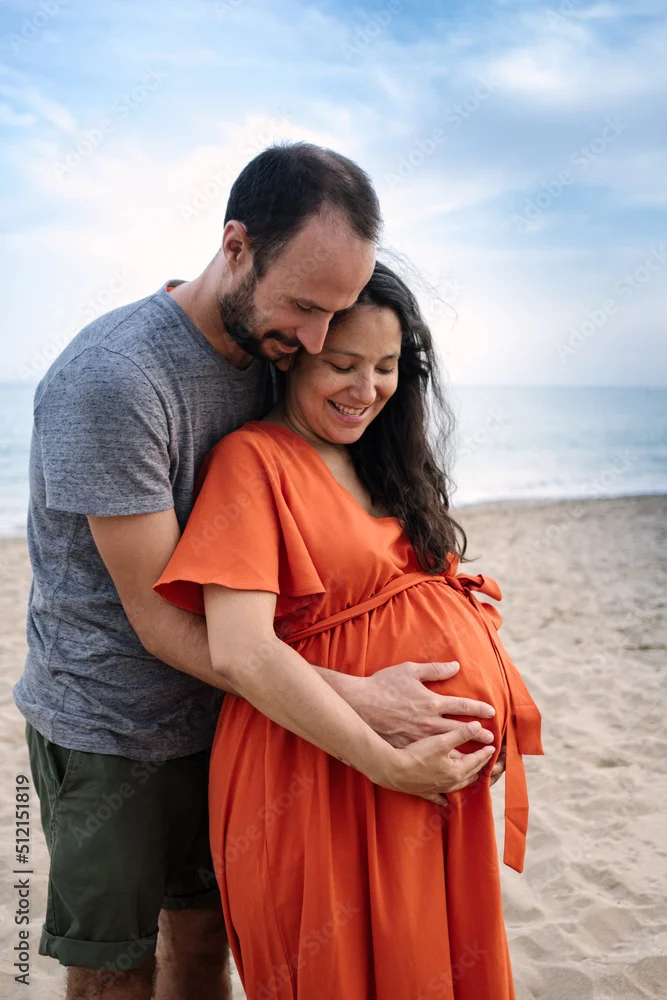As a Democrat, it’s likely not surprising that I align with pro-choice views. However, what may come as a surprise is my personal stance against abortion. While I understand the various reasons a woman might choose to end a pregnancy, I had always believed that I would find a way to manage any challenges that arose. Abortion was never a consideration for me—until circumstances changed dramatically.
During our 19-week anatomy ultrasound, the technician’s silence was unsettling. I tried to convince myself I was being overly anxious, but my instincts were right. We saw her little face, her heartbeat, and learned we were having a daughter. Excitement mixed with anxiety filled the room—another girl! But then, the doctor entered.
Our daughter, whom we named Lily Grace, had skeletal dysplasia. My partner, Mark, squeezed my arm, smiling through the fear. Our baby was a dwarf, but she was perfect in our eyes. We could manage this, or so I thought. Then the doctor uttered the word “lethal,” and reality set in: Lily would not survive.
Typically, babies with dwarfism don’t exhibit noticeable differences until later stages of pregnancy, sometimes even after birth. The fact that Lily’s limbs were already significantly shorter at 19 weeks indicated the severity of her condition. While I had the option to carry her to term, the doctor explained that her rib cage would not allow her lungs to function properly, leading to her death shortly after birth.
Faced with two options—terminate the pregnancy now or endure the heartbreak of watching her suffer—we knew what we had to do. It was not an easy decision, but it was the only humane choice. We couldn’t imagine putting our family, including our young children, through that kind of grief. The decision was clear: I would have an abortion.
No parent anticipates complications with their child. I often found myself wishing for a different scenario—where she would be born a dwarf and we could love and nurture her. But I knew I couldn’t let her suffer, even if it meant I would endure pain in the process.
To our surprise, we received tremendous support from friends and family. Many who identified as pro-life affirmed we were doing the right thing for Lily. However, society often fails to recognize the complexities of such decisions.
Despite believing we were making the best choice for our daughter, we faced obstacles. Our insurance would only cover the costs if I carried her to term and she passed away naturally. Since we had already decided against that painful path, we now faced the financial burden of the procedure. This was not a choice made lightly; we desired her life but recognized she was not meant for this world.
The procedure spanned two days. On the first morning, I was filled with dread. I cried throughout, but it wasn’t until I was on the table that I fully broke down. Mark rested his head on my belly, whispering, “Daddy loves you, Lily.” In that moment, the weight of our loss overwhelmed me. Though I was the one undergoing the procedure, it impacted many people.
I was given medication to ease my pain and anxiety while they prepared my body for the procedure. A medical professional injected Lily to stop her heart, and I felt her movements cease.
Afterwards, I was exhausted and sore, and the medication allowed me to drift into unconsciousness for much of the day. The next morning, I awoke with cramps and a profound sense of emptiness. Soon, the cramps intensified into labor, prompting an early rush to the clinic.
Outside, protesters shouted while holding graphic images, but their cries fell on deaf ears. I had educated myself, and while I was overwhelmed with emotion, I was not uninformed. I was a mature adult making a heartbreaking decision.
The moment I stepped through the clinic doors, my water broke, and shortly after, the laminaria were expelled rapidly. I was taken into a room where the procedure began, and I felt a strange sense of calm. Lily’s life was what mattered most to me.
The final moments were a blur, but not the traumatic experience many describe. After the procedure, the nurse assisted me, and the doctor presented my baby. Although her face bore the marks of the procedure, I spent precious minutes holding her, counting her toes, and whispering my love for her.
Since that day, my feelings have been complex. I often speak of Lily as though she is still with us, as we had hoped to welcome her into the world. Even after the procedure, it feels surreal to acknowledge her absence.
I refuse to refer to her as “the fetus” or say that I “terminated my pregnancy.” Her name is Lily, and I made the choice to spare her from suffering. This is not just a statistic or a political stance; it is my personal experience. While everyone is entitled to their opinions, it’s essential to respect the decisions of others. This has been the most painful chapter of my life, yet I wouldn’t change a thing. I will carry the loss of Lily with me always, but I take comfort in knowing she felt only love and warmth during her time with me.
For more information on pregnancy and home insemination, you may want to explore resources such as this excellent guide on infertility. If you’re interested in home insemination, check out this comprehensive artificial insemination kit for more details. Additionally, if you’re seeking further information on cervical insemination methods, here’s a link to another helpful article.
Summary
The author shares a deeply personal narrative about facing an unexpected decision regarding abortion due to severe fetal abnormalities. Although pro-choice, she expresses a conflicting belief against abortion and recounts the heart-wrenching process of deciding to terminate her pregnancy to prevent her daughter, Lily, from suffering. The essay highlights the emotional complexity of the decision and the support received, while emphasizing the importance of understanding individual experiences around such difficult choices.
